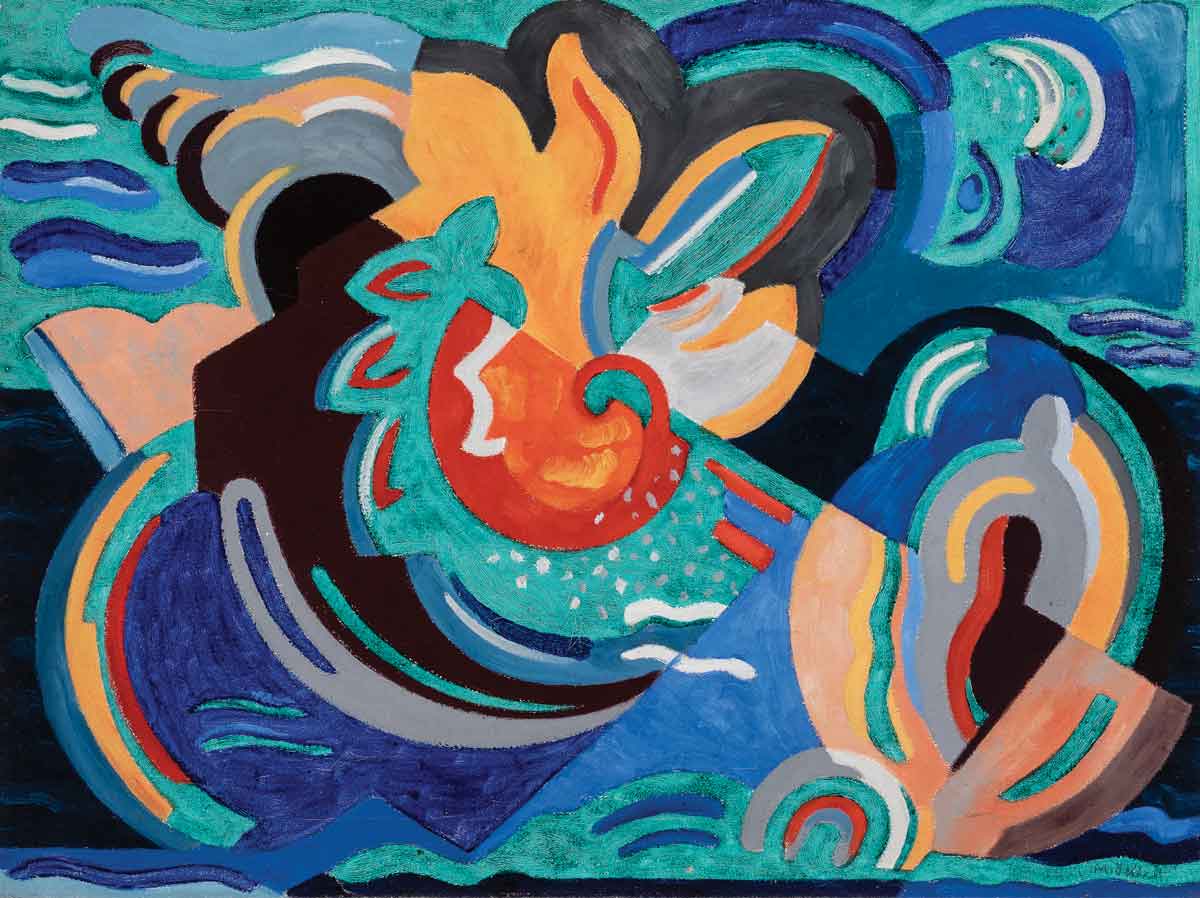A Song for the Eye

Original artist
Mainie Jellett
Original art
Flower Forms
A Song for the Eye
by Maureen Boyle
Maine Jellett, Flower Forms, 1937
‘A painting must be a song for the eye…’ Albert Gleizes
Picking a winter posy of purple pittosporum, penstemon that is mainly seed head,
wallflower and the last of the asters, I come back to your ‘Flower Forms’ that is all summer.
Just as a poem flowers first in the mind, so your painting begins there, you said,
a painting that cannot be a copy, it must be a new creation. This is all exuberance —
flowers formed in colours against the ground on an azure sea, making the light
Mediterranean though it could also be the turquoise of the Atlantic at Achill;
the suggestion of petals like hibiscus – apricot with red at the heart, petals as blowsy as flags;
flowers whose colour absorbs and throws out the light, colours deepened in direct sunlight.
The painting is all movement as though these are launched to sea in a coracle
like one of your precursor monks there in the mini-icon haloed to the right,
the central flower an initial in a book of hours – the sea-ground incarnadine with it,
the stippling of silver a backwash of surf in a wake. I picture my own wedding bouquet,
a July explosion too beautiful to give away, taken and offered to the sea instead
from the boat to Inishbofin – the pinks of roses and lisianthus buoyed on the surface
washed in the waves. Here are colours as cadence as Gleizes demanded
counterpoints of blue – cobalt, topaz, and the spectrum of reds
making a windy music that is all in a major key, angles softened in curves
and even the suggestion of perspective in the cloud shapes to the top left
that mimic the pointing spiral of a conch or the prow of a ship.
I know you would have me eschew story and yet I cannot help but think
of you at one year old in Fitzwilliam Square refusing to leave the gardener;
at seven, making a survey of flowers in Glendalough; your first painting at eleven
of a Dublin flower seller; the vivid blues for forget-me-nots, mauve and yellow for crocuses
in your first sketchbooks; and finally, when asked by Sean O’Faoloain
to describe ‘the most lovely thing you had seen in Ireland’ your description
of happening upon a cillín in Mayo where the sun was brilliant, the sand gold-coloured,
the sea ultramarine and you knew ‘the everlasting beauty of life and death’.